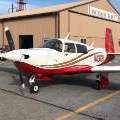Closed Cowl Flaps for Quicker Warm Up
-
Members Online
- 885EW
- Igor_U
- MikeOH
- bigmo
- Mobius708
- Dennis Pendergast
- Danb
- SKF
- Tito22
- Jay Bird
- Taildraggerpilot
- Ibra
- Steve - 37179
- Marc_B
- MooneyMitch
- TCC
- pirate
- PT20J
- Jake@BevanAviation
- EricJ
- MikeL
- M20S Driver
- eman1200
- INA201
- bcg
- Joshua21
- wood_fly
- Patrick Horan
- BillyT0020
- dzeleski
- williamj
- hammdo
- chiBranda22
- outermarker
- Ethan
- PeterRus
- redbaron1982
- VetRepp
- prillayo03
- Hank
- 00-Negative
- NickG
- affricate


Recommended Posts
Join the conversation
You can post now and register later. If you have an account, sign in now to post with your account.